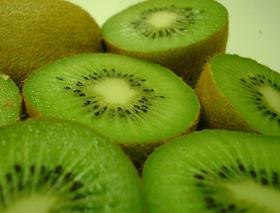
Exports of Chilean kiwifruit should increase by 5 per cent to approximately 193,924 tonnes this year, up from 184,286 tonnes in 2010, according to the first estimates of the season issued by Decofrut and reported by SimFRUIT.
The anticipated growth comes on the back of existing orchards entering commercial production, coupled with an increase in volume coming from orchards which have now reached full maturity.
Variety-wise, SimFRUIT estimates that the production of Summerkiwi and Jinato is set to increase sharply in 2011, as a solid percentage of planted area with Summerkiwi enters full production, which will raise export volume of the variety drastically.
Frosts between September and October stopped production reaching its full potential in specific areas of the O’Higgins region (Coltauco, Puente Negro and Chimbarongo) as well the Maule region (in Romeral, Los Niches and Linares).
However, given that the crop impact was limited, the production decreases in the O’Higgins and Maule regions is not expected to reduce the overall national output.
Although fruit sizes are expected to be in the medium range with a curve range similar to last season, SimFRUIT said some problems related to fruit setting on some orchards could possibly lead to a slight increase in the incidence of misshapen fruit.
Harvesting is due to start as normal – about four to six days earlier than last season when there were delays of between one and two weeks.
A higher percentage of fruit is expected to be stored in Controlled Atmosphere (CA) chambers this season, which will mean the majority of the Chilean crop will be distributed over a longer period of time.
Marketing expectations
Due to low stocks of kiwifruit in Europe in recent months, SimFRUIT expects a higher percentage of Chilean fruit will be shipped to this region, which should naturally lead to a lower volume of fruit destined for Latin America, according to the behaviour shown in previous seasons.
The lower inventories of Italian kiwifruit suggest a more positive season start and a clearer European market for Chilean fruit than last year, a panorama which is being supported by higher sales prices recorded on the Continent.
In Asia, SimFRUIT predicts Chile will supply around 13,575 tonnes of kiwifruit to the market in 2011, if the trend shown in recent seasons remains.
However, the loss of competitiveness suffered last year could affect the Korean market, leading to a decrease in volume shipped to the region and/or punished sales prices.
The US market, meanwhile, is expected to be quite short of supply at the time of entry of the first Chilean kiwifruit due to lower crops from both California and Italy, according to SimFRUIT.
Expectations for good opening prices are therefore high in the US but the quality and condition of the first arrivals will still remain an important factor in generating and maintaining consumer interest throughout the season, especially at the beginning of the deal and prior to the entry of New Zealand kiwifruit.



